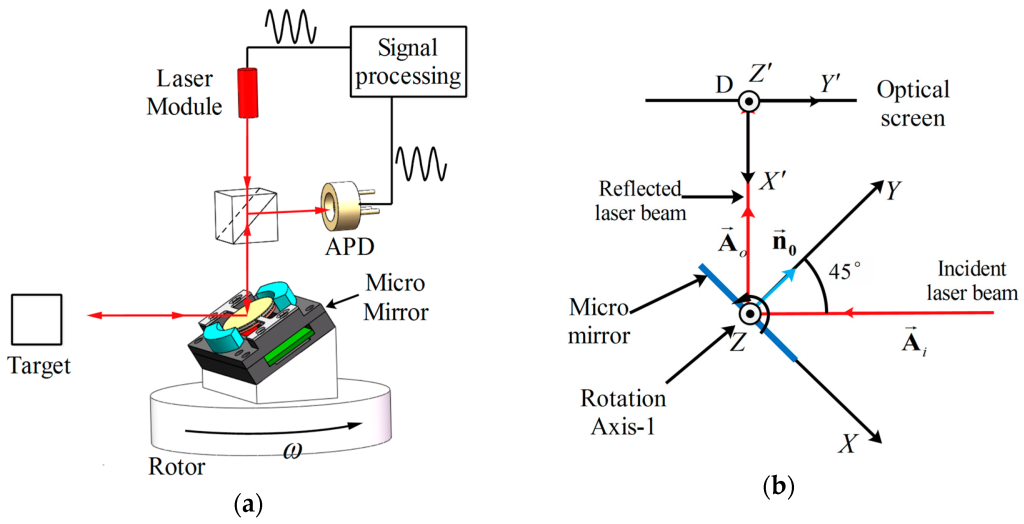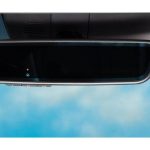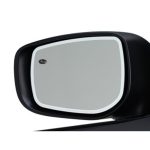Enhance Your Scanning Experience With The Revolutionary Scanning Mirror: Unlock The Power Of Precision And Efficiency Now!
Scanning Mirror: Unlocking the World of Reflection
The Revolutionary Technology Shaping Our Future
Welcome, Nice Peoples, to a world where mirrors do more than just reflect our image. Today, we delve into the fascinating realm of scanning mirrors, a groundbreaking innovation that has revolutionized various industries. From astronomy to laser technology, scanning mirrors have become indispensable tools for scientists, engineers, and researchers alike. In this article, we will explore the ins and outs of scanning mirrors, uncovering their functions, applications, and the impact they have on our daily lives.
1 Picture Gallery: Enhance Your Scanning Experience With The Revolutionary Scanning Mirror: Unlock The Power Of Precision And Efficiency Now!

What is a Scanning Mirror? 🌟
A scanning mirror, also known as a galvanometric mirror or a resonant mirror, is a device that uses precise mechanical movements to reflect light or other electromagnetic waves. These mirrors are equipped with small motors or actuators that allow them to rapidly move and direct the beam of light in different directions. By controlling the movement of the mirror, various applications can be achieved, such as laser beam scanning, optical scanning, and even 3D printing.
Who Uses Scanning Mirrors? 🧑🔬

Image Source: mdpi.com
Scanning mirrors have found extensive use in a wide range of industries and research fields. Scientists and astronomers utilize scanning mirrors in telescopes to capture high-resolution images of celestial objects. In the field of medicine, they play a vital role in medical imaging devices like endoscopes and confocal microscopes, enabling doctors to diagnose and treat diseases more effectively. Moreover, scanning mirrors are also employed in the entertainment industry for creating immersive laser light shows and projection mapping.
When and Where Scanning Mirrors Are Used? 🌎
The use of scanning mirrors can be traced back to the early 20th century when they were first introduced in scientific research. Since then, their applications have expanded significantly. They are now utilized in various fields, including laser technology, barcode scanning, virtual reality, and robotics. Scanning mirrors can be found in research laboratories, manufacturing facilities, hospitals, entertainment venues, and even our smartphones, where they assist in autofocus and image stabilization.
Why Choose Scanning Mirrors? 🤔
The benefits of using scanning mirrors are abundant. Their precise movements and rapid scanning capabilities make them ideal for applications requiring high-speed and accurate beam steering. Scanning mirrors provide enhanced imaging resolution, enabling the capture of intricate details. Furthermore, their compact size and low power consumption make them versatile and cost-effective alternatives to conventional scanning systems. With their ability to redirect light efficiently, scanning mirrors have become an essential component in numerous cutting-edge technologies.
How Do Scanning Mirrors Work? 🔄
Scanning mirrors operate based on the principles of electromagnetics and mechanical engineering. By controlling the electrical signals to the mirror’s actuators, the mirror is able to oscillate or rotate, redirecting the incoming light. The mirror’s movement is precisely controlled by computer algorithms, allowing for precise positioning and scanning. The speed and accuracy of the mirror’s movement determine its performance, making it crucial for applications where precision is paramount.
Pros and Cons of Scanning Mirrors
Advantages of Scanning Mirrors
1. Versatile applications across various industries and research fields.
2. High-speed and accurate beam steering capabilities.
3. Compact size and low power consumption.
4. Enhanced imaging resolution for capturing fine details.
5. Cost-effective alternatives to traditional scanning systems.
Disadvantages of Scanning Mirrors
1. Limited scanning range and field of view.
2. Susceptible to mechanical wear and tear.
3. Complex control systems require advanced technical knowledge.
4. Sensitive to vibrations and external disturbances.
5. Initial setup and calibration can be time-consuming.
Frequently Asked Questions About Scanning Mirrors
1. Can scanning mirrors be used in autonomous vehicles?
Yes, scanning mirrors can be used in autonomous vehicles for applications such as LiDAR systems, where they help in accurately mapping the surroundings and detecting obstacles.
2. Are scanning mirrors only used in scientific research?
No, scanning mirrors have expanded their applications beyond scientific research. They are now used in various industries, including healthcare, entertainment, and manufacturing.
3. How do scanning mirrors improve laser technology?
Scanning mirrors enable precise control and manipulation of laser beams, allowing for laser cutting, engraving, and marking applications with high precision and speed.
4. Can scanning mirrors be used in virtual reality devices?
Yes, scanning mirrors are used in virtual reality devices to create immersive experiences by accurately reflecting light onto the user’s eyes, resulting in realistic visuals.
5. Are scanning mirrors commonly used in barcode scanners?
Yes, scanning mirrors are essential components in barcode scanners as they enable the rapid scanning and decoding of barcodes, improving efficiency in retail and logistics operations.
Conclusion: Embracing the Future of Reflection
As we conclude our exploration of scanning mirrors, it becomes evident that these remarkable devices have propelled numerous technological advancements across various industries. Whether it’s capturing breathtaking images of distant galaxies or enhancing the precision of medical procedures, scanning mirrors have become indispensable tools that shape our modern world. Embrace the future of reflection and stay tuned for the exciting possibilities that lie ahead.
Final Remarks: Unlocking New Dimensions
In this era of innovation, scanning mirrors have unlocked new dimensions of possibilities, from high-speed laser scanning to advanced medical imaging. However, it is important to note that like any technology, scanning mirrors have their limitations and require proper understanding and expertise for optimal utilization. As technology continues to evolve, scanning mirrors will undoubtedly play an increasingly significant role in shaping our future.
This post topic: Mirror



